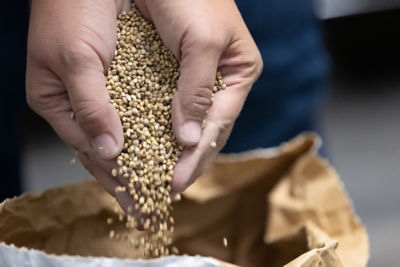Causal Agent
Stemphylium vesicarium
Distribution
India and USA, however, the pathogen may occur in other onion growing regions of the world.
Symptoms
Initial infections on the leaves and leaf sheaths are small, light yellow to brown, and water-soaked. As the lesions expand they coalesce causing extensive blighting of the leaves. Typically, lesions are found in higher numbers on the side of leaves facing the prevailing wind. The centers of lesions turn brown to tan, then dark olive-brown and finally black as the fungus sporulates. Sometimes fruiting bodies called perithecia may appear in infected tissue as small, black, pinhead-like raised bodies. Symptoms of stemphylium leaf blight are very similar to those of purple blotch, which often results in misidentification.
 Dark brown to black sporulation on leaves.
Dark brown to black sporulation on leaves.
Conditions for Development
Extended periods of leaf wetness from dew formation, rainfall or overhead irrigation during bulb formation and development can result in severe leaf blighting. Bulb size can be greatly reduced due to loss of foliage. Infection is usually limited to leaves and does not extend down to the scales of the bulb.
Control
Chemical control with fungicides is effective in reducing disease development. Long term rotation with unrelated crops may reduce losses. Also, good field drainage and reduced plant density may lessen disease severity.



